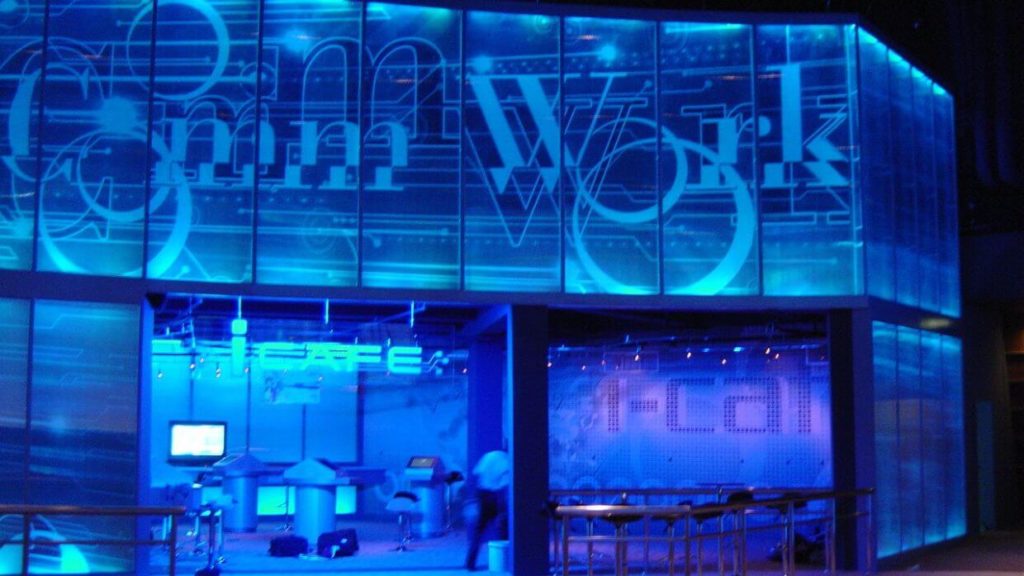Immersive, interactive displays were an integral part of transforming one of Singapore Science Center’s galleries into a sleek, futuristic environment where guests discovered the far-reaching possibilities of Singapore’s infocomm industry.
Client: Singapore Science Centre
Services: Master Planning, Museum Design, Media Production, Interactive Experiences, Sound Production, Project Management, Installation Supervision, Art Direction
Location: Singapore
When the Singapore Science Center decided to create a brand-new interactive experience that would far surpass conventional museum exhibit offerings, they turned to Falcon’s Creative Group. The result was i-Space, a collection of more than fifty hands-on exhibits showcased in a sleek, streamlined environment. The design was as compelling as the subject matter featured within the unique gallery.
The goal of i-Space was to promote the exciting field of information communication technology to the next generation of scientists and consumers. Falcon’s believed that the most effective way to showcase the latest ideas and technologies in this booming industry was to bring them to life through interactive exhibits and engaging media built within immersive environments. They wanted i-Space to provide visceral proof that next era technologies could forge a more connected world, forever changing the way people live, work, and play.
A subplot of the exhibition was demonstrating the indelible influence of science fiction on real-world science and pop culture. Using science fiction as a conduit, i-Space expanded visitors’ technological knowledge in a way that resonated with all demographics. Through revolutionary design, the Singapore Science Center embraced the legacy of science fiction imaginings and the profound impact they had on scientific research and the human experience. Just as science fiction had historically envisioned and predicted the future, the concepts implemented within i-Space served as an ideal proving ground for future technologies of the infocomm industry.
Before Falcon’s could map out the details for all the various touchpoints, they had to reimagine the center’s physical science gallery. How would they lay out the space that would host dozens of interactive stations? How would they group the experiences to tell a cohesive story? What would be the wow moments and the attraction’s stars, so to speak? And perhaps the biggest question for any project of this nature – how do you gain and retain attention?
Falcon’s began answering these questions in the Reality Theater, where guests were shown a brief video with an overview of what to expect at the i-Space exhibition. They met their digital host, a Max Headroom-like character named Babble who could talk intelligently to people, even calling them by name. The orientation also introduced guests to the concept of infocomm technology.
As the eager visitors exited the theater, they stepped up to an interactive RFID kiosk. Radio Frequency Identification is an automatic identification method that relies on storing and remotely retrieving data using devices called tags or transponders. Visitors provided basic information, and, in exchange, they received an RFID badge that personalized their engagement with each exhibit and environment.
An elevator took guests to the second floor, where they began their journey by crossing the infocomm bridge, an interactive tunnel filled with sound effects, otherworldly music, and streaming lines of light and data that indicated passage along the information highway. A lighted walkway allowed visitors to form connecting patterns from person to person through the placement of their feet. This system was comprised of video projectors placed underneath the floor that displayed content onto the walking surface.
It was important to provide structure to this technology-heavy exhibition, which is why the team at Falcon’s separated the displays by four specialty areas – Inspiration, Work, Home, and Imagination.
The first area on the linear tour, Inspiration, featured infocomm technologies of the past. Many interesting props from science fiction film and television classics were showcased next to their current day counterparts, inviting curiosity, contrast, and comparison.

An abundance of amusing interactives and fascinating displays in the other three areas invited visitors to explore infocomm’s present and future in home and work settings. Some highlights included a robot who could hold a conversation, a smart refrigerator that could alert its owner to expiring food or suggest a menu based on the contents inside, a Minority Report-like panoramic interface where guests controlled images with gestures and hand movements, and a virtual job interview that took place in a state-of-the-art conference room featuring touchscreens embedded into the room’s table.
One of the more buzz-worthy installations was the toilet of the future. Taking a seat on the flat surface of the Bio Stool toilet, guests placed their hand on the adjacent wall and received their own vital statistics, including weight and age. The friendly voice of the Bio Stool even shared a hypothetical analysis of the contents of their fantasy “deposit.”
In the exhibition’s Imagination area, also called The Future, a group of eight visitors gathered on transporter pads. Once everyone was in place, the lights blinked out, and a series of small, round flashes flickered through the darkness, simulating the "transporter effect" made famous by Star Trek. Sensory effects enhanced the gag. When the lights came back up, visitors noticed they were standing in a completely different environment, though they never physically moved.
All exhibits benefit from having at least one major visual component that catches visitors’ attention and leads to moments of awe and maybe even quiet contemplation. In this case, it was a stunning aluminum tree sculpture composed of 111 miles of fiber optic cable. This dramatic nexus of the experience sat within a glass globe that represented our planet. The centralized icon reinforced the idea that branches of communication touch every corner of the world.
This compelling, innovative, forward-thinking exhibition in Singapore was not only educational but entertaining. The metamorphosis of an existing space captured the public’s imagination and drew legions of curious visitors from all parts of Asia. As the master planner, project manager, and executive producer for the exhibition, Falcon’s established a new design paradigm, one that sparked the imagination, excited the intellect, and inspired further exploration.







